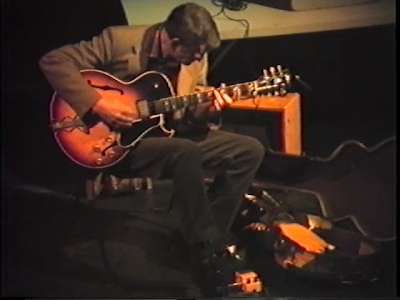Director: Pierre Hébert
Year: 2005
Time: 14 mins
Music
Fred Frith
Tenko & John Zorn
Eye of Sound: Fred Frith once lamented that the dancers for Rosalind Newman's 1987 choreography The Technology of Tears complained about the music he had written for the piece: it was thought to be too rigid and mechanical for the fluidity of movements the dancers aimed at. Nevertheless, Frith's homonymous piece survived its original setting as one of his most beautiful scores, presenting an uncanny blend of musicianship, rhythmical accent, virtuosity, timbrical vigour, and emotional spunk that distinguishes it from most of its contemporaries. It was perhaps as an act of justice that Pierre Hébert decided to revisit Technology, for which he had designed the video sections (and the LP cover) and offer an overtly choreographed reinterpretation of the piece, one in which the fluidity of movements does not seem hindered by the invasive pulse of Frith's score. This decision was all the more justified as the project was originally conceived as an intimate collaboration between the three artists, in which the three artists would make their contributions evolve along with the others' and none would be condemned to be foreground or a mere scenic servant of the remaining elements. Hébert's Technology uses animations produced much later "to fill in the black hole in the continuity that had served the scenography for the dance piece", not being, therefore, a simple transposition of the choreography into animated drawings. For some sections, Hébert had Newman repeat the main solo dance of the piece in a studio and repeatedly drew it on film (as he often does in live performances), creating a visual "explosion of the solo itself" by means of a technique that bears the obvious influence of Len Lye, quoted by Hébert as the founding father of the relationship between animation and body movement.










































